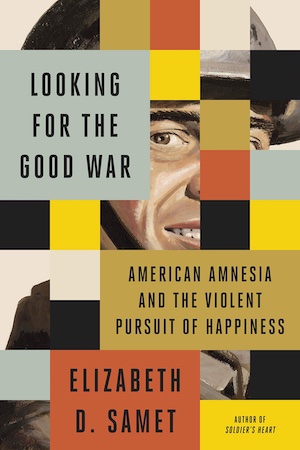By Fred H. Lawson
It has become commonplace to assert that the Second World War was a defining moment in American history. Prior to that war, the United States played only a marginal role in global affairs; after the war, it dominated international politics and economics outside the Soviet Bloc. Before that war, Washington maintained only a minimal military establishment; after the war, the United States armed forces stayed massive and consumed unprecedented amounts of government attention and funding. Before that war, racial discrimination went largely ignored in northern and western states; after the war, the inequities and humiliations suffered by Black Americans became a national problem.
Despite its importance, the war itself has faded into a sepia-toned myth of heroism and self-sacrifice. Political figures as diverse as George W. Bush, Barack Obama, and Donald Trump agree that the battle against National Socialist Germany and Imperial Japan was undertaken “to free other nations from tyranny and fear [and] to promote justice, and fairness, and equality under the law.” The war not only demonstrated the fundamental greatness of the United States but also propelled it into a position to exercise power in ways that might enhance its glory. Whatever wartime horrors had been required to achieve that preeminence have been relegated to the past and erased from popular memory.
How this happened is a question well worth addressing. Elizabeth Samet does so by surveying a broad range of literary, journalistic, and cinematic accounts of the Second World War and its immediate aftermath. The writings of Ernie Pyle, John Hersey, Stephen Ambrose, John Ciardi, and Tom Brokaw receive a great deal of comment, as do the films The Best Years of Our Lives, Acts of Violence, and Saving Private Ryan. Marlene Dietrich’s struggle to reconcile her Hollywood career with her personal background is recounted in detail. The descriptions of European countries contained in the guidebooks that were prepared for United States troops, mostly called A Pocket Guide to the place at hand, are sampled at length.
Still, it is hard to discern the primary theme driving this pastiche. One might well think that the purpose of the book is to criticize the standard interpretation of America’s role in the Second World War. Samet lays out that interpretation in six concise bullet points, but then does not use these points as a framework to organize the presentation of material. Her basic critique appears to follow Paul Fussell’s Wartime: Understanding and Behavior in the Second World War, a book that I intend to track down right away. Or the purpose may instead be to show how the American experience of the Second World War colored United States involvement in subsequent conflicts. Her remarks about the Korean War lean in this direction, although they are largely limited to that “forgotten war” itself and make little if any connection to the preceding conflict.
Looking for the Good War offers an intriguing assortment of quotations from and summaries of contemporaneous writings and films concerning the Second World War, along with sometimes lengthy excerpts of critical observations made by scholars and public intellectuals. The book can thus serve as a helpful guide to further exploration. Samet’s own set of analytical questions—”Has the prevailing memory of the ‘Good War,’ shaped as it has been by nostalgia, sentimentality, and jingoism, done more harm than good to Americans’ sense of themselves and their country’s place in the world? Has the meaning of American force been perverted by a strident, self-congratulatory insistence that a war extraordinary in certain aspects was, in fact, unique in all? [and] Has the desire to divorce that war from history . . . blinded us to our own tragic contingency?”—remain to be answered.
Fred H. Lawson (ΦBK, Indiana University) is Professor of Government Emeritus of Mills College. Indiana University is home to the Gamma of Indiana chapter of Phi Beta Kappa.




